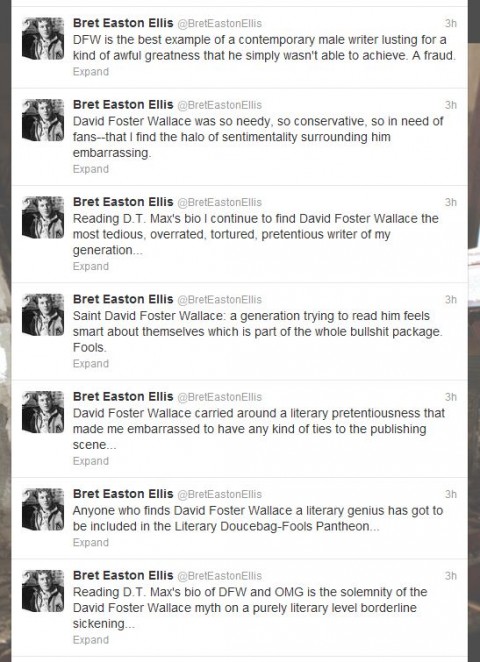In 1973, legendary director D.A. Pennebaker decided to film the London leg of David Bowie’s tour of Britain in support of Aladdin Sane. Little did Pennebaker know that Bowie, in his most famous incarnation as Ziggy Stardust, would announce his retirement after the final encore. What Bowie retired, of course, was the Ziggy persona—fans of that incarnation are indebted to Pennebaker for catching the final act in his film Ziggy Stardust and the Spiders from Mars.
Pulling footage from Pennebaker’s concert film, and a great deal of rare footage, and narrated by Jarvis Cocker, the BBC documentary David Bowie: The Story of Ziggy Stardust (above) does what Pennebaker’s film refused to; it tells a story, in typical TV documentary fashion, of the rise of Ziggy. And it’s not a story that many fans know. The first part of the film addresses Cocker’s question: “What made this mysterious extra-terrestrial one of the most influential cultural icons of the 20th century?” It turns out, quite a lot went into the making of Bowie’s 1973 breakthrough as Ziggy Stardust. In fact, says Cocker, “at that time,” when Bowie emerged as this seemingly fully-formed character, “we didn’t realize that he’d been trying to be successful for 10 years.”
Bowie had fronted a number of derivative R&B groups in the early sixties under his given name Davy (or Davie) Jones. Since his name invited confusion with the then-famous Monkee, he changed it in 1967 and released his first single as David Bowie, a creepy novelty record called The Laughing Gnome, which was included on his first self-titled album. The album, “a strange mix of musical and pop,” was inspired by light comic entertainer Anthony Newley–whose “surreal comedy paved the way for Monty Python”–and it was a failure. But, Cocker informs us, Bowie was learning from his mistakes: “Newley’s quirky versatility would inform the theatrical DNA of Ziggy Stardust.” Bowie was casting around, trying to find a persona to suit the latent talent it seemed only he believed in. His longtime drummer Woody Woodmansey says above, “he was going through a trial and error period, and there was a lot of error.”
One breakthrough came when he met dancer Lindsay Kemp, who taught him mime and with whom Bowie toured in a theater production and had an affair. During these years of seeming failure, Bowie learned all of the skills that he would use to construct Ziggy: dance, mime, stage and television acting, and sexual expression. As Kemp tells it, “he had an enormous sexual appetite”—a central part of Ziggy, and Bowie’s, pull. Another breakthrough came with 1970’s “Space Oddity, which hit #5 on the UK charts. But the album of the same name did not fare well. Filled with meandering psych-folk ballads more Donovan than Queen Bitch, Space Oddity disappointed. Bowie had not yet found his voice, nor his muse, and he would not until he met his first wife Angie, who “made him brave” and helped him put together his first glam-rock project The Hype, with guitarist Mick Ronson. The hype went nowhere, but Ronson and Bowie collaborated on his next album, The Man Who Sold the World.
Finally, says Bowie, after those years of near-obscurity, “somebody did come along and grab me by the empty wallet and said, I’m Tony Defries and I’m going to make you a star.” Defries introduced him to Andy Warhol’s New York scene and he became something of a scenester himself, but he was still too shy to fully inhabit Ziggy Stardust, so he used a surrogate—a fashion designer named Freddie Burretti. Burretti was to serve as the face, while Bowie wrote and sang the songs. He called the project “Arnold Corns.” Bowie produced the Arnold Corns record with many of the songs that would eventually make it to the Ziggy Stardust album—including “Moonage Daydream”—but they were rudimentary and flat and the project was a failure, though the idea lived on while Bowie wrote and recorded Hunky Dory with Ronson, Woody Woodmansey, and Trevor Bolder, the lineup of Ziggy’s future Spiders From Mars. Just two weeks after the 1972 wrap of Hunky Dory, the sessions for Ziggy Stardust and the Spiders from Mars began.
Though Bowie seemed to come out of nowhere in the early 70s as an androgynous young harbinger of rock and roll to come, those ten years he spent working to find the perfect formula for fame had made him reflective. A 2002 New York Times reviewer of Pennebaker’s film writes that in 1973, Bowie’s, “lyrics often find Mr. Bowie wrestling with the threats of time and aging, as if he were already, at age 26, staring decrepitude in the face. Mr. Bowie is now 55 and, superficially at least, seems none the worse for wear.”
Josh Jones is a doctoral candidate in English at Fordham University and a co-founder and former managing editor of Guernica / A Magazine of Arts and Politics.
 Little known fact. My first adventure in publishing began as a 16 year old, when I teamed up with my best friend, another ardent fan of The Who, and together we published a fanzine dedicated to the British rock band. We called it Tales from The Who, a name taken from a bootleg concert album recorded in our native Philadelphia during the ’70s. To get the zine going, we borrowed an electric typewriter, cut out pictures, collaged it all together, made copies on a photocopy machine, then started marketing the publication in Rolling Stone magazine. When actual subscriptions rolled into our P.O. Box, we couldn’t believe it.
Little known fact. My first adventure in publishing began as a 16 year old, when I teamed up with my best friend, another ardent fan of The Who, and together we published a fanzine dedicated to the British rock band. We called it Tales from The Who, a name taken from a bootleg concert album recorded in our native Philadelphia during the ’70s. To get the zine going, we borrowed an electric typewriter, cut out pictures, collaged it all together, made copies on a photocopy machine, then started marketing the publication in Rolling Stone magazine. When actual subscriptions rolled into our P.O. Box, we couldn’t believe it.


